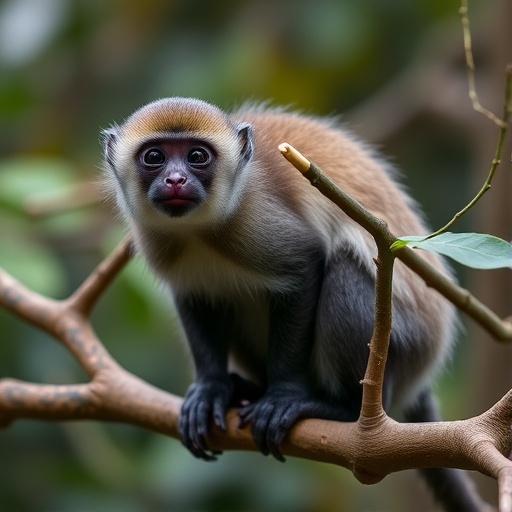In a groundbreaking study poised to reshape the landscape of women’s reproductive health research, a team of scientists from leading institutions including UCLA, Harvard, UC San Francisco, and the Oregon National Primate Research Center has unveiled the first comprehensive cellular and molecular roadmap delineating the formation of the ovarian reserve in primates. This pioneering work, published in Nature Communications, offers an unprecedented window into the early developmental stages of ovarian biology, providing fertile ground for advancing therapies for infertility and hormonal disorders such as polycystic ovary syndrome (PCOS).
The ovarian reserve, an intrinsic stockpile of oocytes established before birth, underpins all reproductive capacity in females and is responsible for the cyclical secretion of sex hormones. Despite its critical role, the elusive processes governing ovarian reserve formation have long thwarted detailed scientific scrutiny, primarily due to the inaccessibility of human prenatal tissue and the transient nature of early developmental stages. To circumvent these challenges, the research consortium turned to the rhesus macaque, a primate species with remarkable genetic and physiological congruence to humans, sharing approximately 93% of their DNA sequence. This choice allowed the team to capture high-resolution snapshots of ovary maturation from inception through follicle formation.
Employing cutting-edge single-cell RNA sequencing coupled with spatial transcriptomics, the scientists meticulously mapped ovarian cell populations across developmental timelines. This multi-dimensional approach enabled them to characterize not only the identities but also the molecular signatures and spatial organization of diverse cell types, including primordial germ cells, granulosa cells, and the emerging follicular microenvironment. Granulosa cells, marked by FOXL2 and KRT19 proteins, were shown to intricately encase the developing oocytes, establishing the follicular units essential for both egg maturation and endocrine function.
One of the study’s most remarkable insights addresses the enigmatic phenomenon known as mini-puberty—a transient surge of gonadotropin and sex steroids occurring shortly after birth, the physiological purpose of which had remained speculative. The data uncovered specialized hormone-producing ovarian cells that become activated just prior to birth, initiating a period of “practice growth” that primes the neonate for this hormone surge. This revelation not only elucidates a key developmental milestone but also implicates mini-puberty as a potential early diagnostic indicator for disorders such as PCOS, observed in roughly 10% of women worldwide.
The implications of being able to detect ovarian dysfunction in infancy extend far beyond early diagnosis. By identifying perturbations in hormone production during this critical window, clinicians could intervene preemptively, modifying reproductive trajectories and potentially mitigating the severity of conditions that manifest during adolescence or adulthood. This proactive paradigm could revolutionize how reproductive disorders are understood and treated.
Moreover, the comprehensive cellular atlas created by the team opens new frontiers for in vitro modeling of ovarian biology. Previous efforts to engineer ovarian organoids—miniature, simplified versions of organs grown in the lab—have been hampered by an incomplete understanding of the precise cellular constituents and signaling environments necessary to recapitulate in vivo ovarian development. With this newfound roadmap, stem cell biologists are now equipped to generate accurate, induced pluripotent stem cell-derived ovarian support cells and germ cells, paving the way for complex three-dimensional ovarian constructs.
Such bioengineered ovary models will not only illuminate fundamental aspects of ovarian physiology and pathology but also serve as platforms for high-throughput drug screening and fertility preservation technologies. This is particularly salient as infertility rates rise globally and the demand for personalized medicine escalates. Having customizable ovarian models derived from patient-specific cells could enable targeted therapeutic interventions tailored to individual molecular underpinnings.
This seminal research exemplifies the critical importance of basic science in uncovering the mechanistic foundations that drive human health and disease. Through meticulous mapping of the primate ovary, the investigators have bridged a vast knowledge gap that stood between clinical reproductive challenges and their cellular origins. As described by senior author Dr. Amander Clark, these advances chart a path toward precise, mechanistically informed approaches to treating ovarian dysfunction—promising profound benefits for women and girls worldwide.
The study’s interdisciplinary nature, melding developmental biology, genomics, and reproductive science, underscores the power of collaborative, technology-driven inquiry. By blending spatially resolved transcriptomics with single-cell resolution, the research transcends previous limitations, providing a holistic view of ovarian formation in real time. This integrative strategy reveals the temporal choreography of gene expression and cellular interactions that sculpt the ovarian reserve, revealing new regulatory networks and signaling pathways ripe for further investigation.
Looking ahead, the team is actively pursuing the translation of these findings into tangible biomedical tools. Efforts are underway to refine protocols for deriving functional ovarian support cells and germ cells from induced pluripotent stem cells, a crucial step toward generating fully functional ovarian organoids. These models will serve as dynamic systems for unraveling the pathogenesis of reproductive disorders, testing novel fertility treatments, and advancing regenerative medicine.
The study not only advances the frontier of reproductive biology but also addresses a historically neglected realm of female health research. By illuminating the intricacies of a vital yet understudied organ, this work lays the groundwork for more equitable scientific inquiry and improved health outcomes for populations often marginalized in biomedical research. It signals a transformative shift in how ovarian development and dysfunction are conceptualized and approached clinically.
In sum, this landmark investigation provides an invaluable cellular and molecular blueprint of primate ovarian reserve formation, offering a powerful platform for future investigation and innovation. Its insights into mini-puberty, follicle biology, and stem cell-based ovarian engineering are poised to catalyze breakthroughs in infertility treatment and hormonal disorder management, heralding a new era of reproductive medicine grounded in precise developmental understanding.
Subject of Research: Animal tissue samples
Article Title: Defining the cell and molecular origins of the primate ovarian reserve
News Publication Date: 26-Aug-2025
Web References: 10.1038/s41467-025-62702-0
Image Credits: Sissy Wamaitha/UCLA
Keywords: Reproductive biology, Reproductive system, Genetics, Cell biology, Developmental biology, Molecular biology, Ovarian follicles
Tags: challenges in ovarian reserve studyearly ovarian biology insightshormonal disorders and PCOSNature Communications publicationoocyte formation before birthovarian maturation and follicle formationprimate ovarian reserve developmentreproductive capacity in femalesrhesus macaque genetic similaritiessingle-cell RNA sequencing in researchUCLA infertility therapieswomen’s reproductive health research





